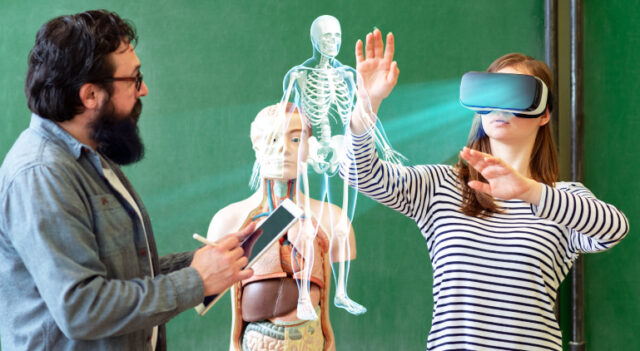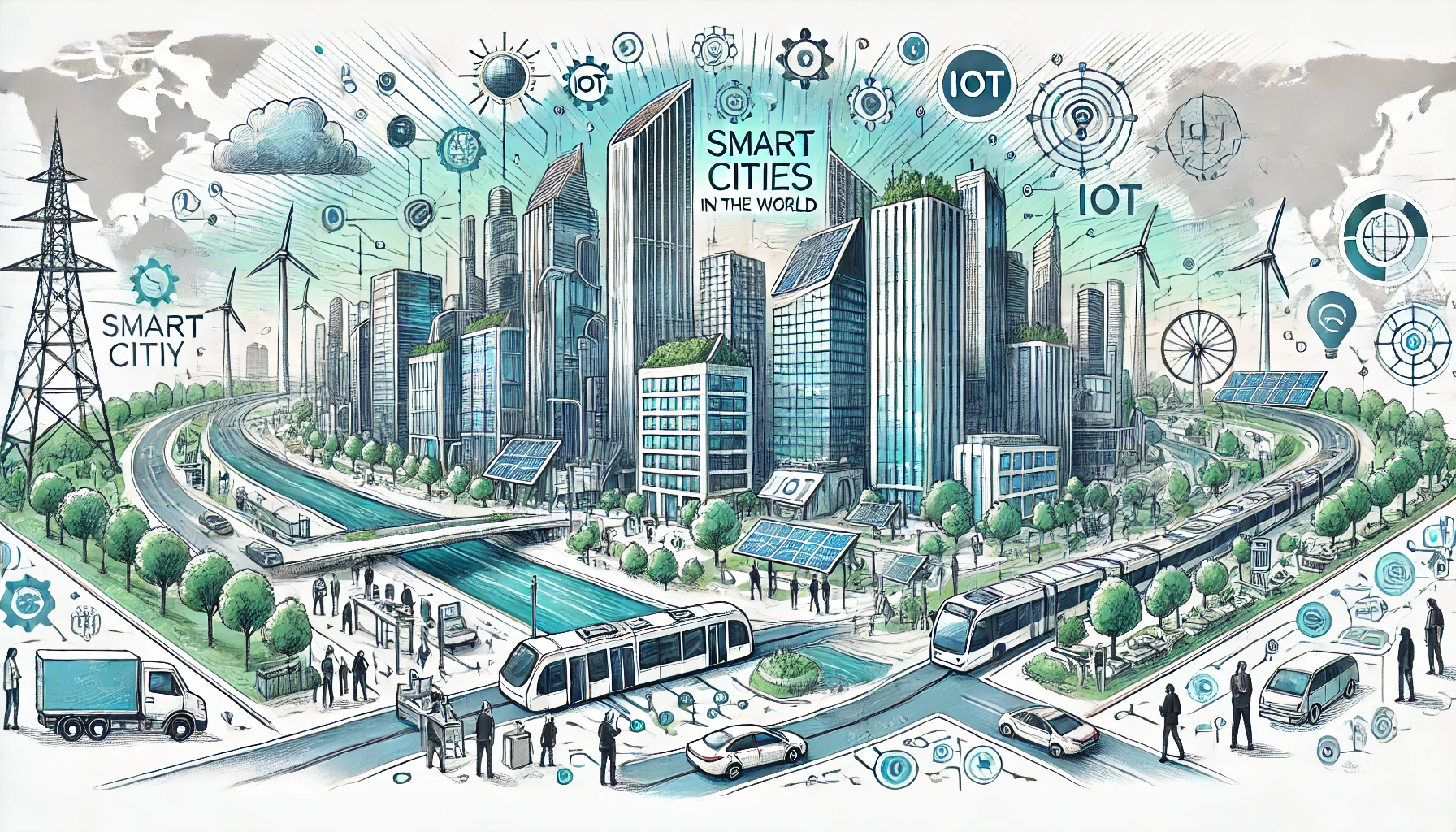Revolutionary 5 Ways Virtual Reality Transforms Education
Revolutionary 5 Ways Virtual Reality Transforms Education
Related Articles: Revolutionary 5 Ways Virtual Reality Transforms Education
- Brilliant Revolution: 5 Ways The Internet Of Things Is Transforming Our World
- Conquering 5 Crucial Cybersecurity Threats: Ultimate Defense Strategies
- Revolutionary 5G’s Impact: The Exploding Power Of Edge Computing
- 7 Amazing Smart Cities Revolutionizing Urban Life
- Amazing Breakthroughs: 5 Revolutionary Green Tech Solutions Transforming Our Planet
Introduction
With enthusiasm, let’s navigate through the intriguing topic related to Revolutionary 5 Ways Virtual Reality Transforms Education. Let’s weave interesting information and offer fresh perspectives to the readers.
Table of Content
Revolutionary 5 Ways Virtual Reality Transforms Education

Virtual reality (VR) is rapidly transforming how we learn and teach. No longer a futuristic fantasy, VR technology is becoming increasingly accessible and affordable, offering educators unprecedented opportunities to engage students in immersive and interactive learning experiences. This article explores five revolutionary ways VR is reshaping the educational landscape, highlighting its potential to overcome traditional limitations and foster a more dynamic and effective learning environment.
1. Immersive Field Trips and Experiential Learning:
One of the most compelling applications of VR in education is the ability to provide students with immersive field trips to locations otherwise inaccessible or impractical to visit. Imagine a class of geography students exploring the Amazon rainforest, witnessing the biodiversity firsthand, without ever leaving the classroom. Or a history class walking through ancient Rome, witnessing the grandeur of the Colosseum and the bustling marketplace. These virtual experiences offer unparalleled levels of engagement and allow students to connect with the subject matter on a deeper, more visceral level.
Traditional field trips are often expensive, logistically challenging, and limited in scope. VR eliminates these barriers. Students can explore diverse environments, from the depths of the ocean to the surface of Mars, all within the safety and convenience of their school. Furthermore, VR field trips can be customized to meet specific learning objectives. Teachers can control the pace of the experience, highlight key features, and incorporate interactive elements to enhance understanding. This level of control and personalization is impossible to achieve with traditional field trips.
Beyond geographical locations, VR can also simulate historical events, scientific experiments, and artistic creations. Students can witness the eruption of Mount Vesuvius, dissect a human heart without harming a specimen, or walk through a Van Gogh painting, experiencing the artist’s vision in a profoundly immersive way. This experiential learning approach fosters deeper comprehension and retention than traditional methods of instruction. Studies have shown that students exposed to VR learning experiences exhibit significantly higher levels of engagement, knowledge retention, and problem-solving skills.
2. Enhanced Engagement and Motivation:
The interactive and immersive nature of VR significantly enhances student engagement and motivation. Unlike passive learning methods such as lectures and textbooks, VR actively involves students in the learning process. They are not simply observing; they are participating, exploring, and interacting with the virtual environment. This active participation fosters a sense of ownership and responsibility for their learning, leading to increased motivation and a deeper understanding of the subject matter.
Traditional classroom settings can often struggle to cater to diverse learning styles and preferences. Some students may be visual learners, others auditory, and still others kinesthetic. VR offers a solution by catering to all these learning styles simultaneously. The visual immersion, auditory cues, and interactive elements provide a multi-sensory learning experience that engages students regardless of their preferred learning style. This inclusive approach ensures that all students have the opportunity to learn effectively and achieve their full potential. The gamified aspects of many VR educational applications further enhance motivation by incorporating elements of competition, reward, and achievement, transforming learning into an enjoyable and rewarding experience.
3. Safety and Risk-Free Learning:
VR provides a safe and risk-free environment for students to explore potentially dangerous or complex situations. Imagine a medical student practicing a complex surgical procedure without the risk of harming a patient. Or a firefighter trainee navigating a burning building without the danger of real flames. VR simulations allow students to practice critical skills in a controlled environment, building confidence and competence before tackling real-world challenges.
This risk-free environment is particularly valuable in fields such as medicine, engineering, and aviation, where practical training can be expensive, time-consuming, and potentially dangerous. VR simulations offer a cost-effective and safe alternative, allowing students to make mistakes and learn from them without real-world consequences. This iterative learning process enhances skills acquisition and improves decision-making abilities in high-stakes situations. The ability to repeat and refine actions within a virtual environment allows for mastery of complex skills that might be difficult or impossible to achieve through traditional training methods.
4. Personalized and Adaptive Learning:
VR technology facilitates personalized and adaptive learning experiences tailored to individual student needs and learning styles. VR learning platforms can track student progress, identify areas of weakness, and adjust the difficulty level accordingly. This personalized approach ensures that each student receives the support and challenges necessary to maximize their learning potential. Furthermore, VR can provide individualized feedback and guidance, helping students to identify and correct their mistakes. This real-time feedback loop is crucial for effective learning, and VR excels in providing this personalized support.
Traditional classroom settings often struggle to provide individualized attention to each student. Teacher-student ratios can be high, limiting the amount of individualized support that can be provided. VR offers a solution by providing personalized learning experiences that are scalable and accessible to all students. This personalized approach allows for differentiated instruction, catering to diverse learning styles, abilities, and paces. The adaptive nature of VR ensures that students are constantly challenged and engaged, preventing boredom and fostering a love of learning.

5. Accessibility and Inclusivity:
VR technology has the potential to significantly enhance accessibility and inclusivity in education. For students with physical disabilities or learning differences, VR can provide a more accessible and engaging learning environment. For example, students with mobility impairments can participate in virtual field trips and simulations that would be otherwise impossible for them to experience physically. Students with learning disabilities can benefit from the personalized and adaptive nature of VR, receiving support tailored to their specific needs. The immersive and interactive nature of VR can also enhance engagement for students with attention deficits or other learning challenges.
Furthermore, VR can bridge geographical barriers, allowing students in remote or underserved areas access to high-quality educational resources. VR can provide virtual access to expert instructors, specialized equipment, and diverse learning experiences that would be otherwise unavailable. This increased accessibility ensures that all students, regardless of their location or circumstances, have the opportunity to receive a quality education. This democratizing effect of VR is a significant benefit, promoting educational equity and providing opportunities for students who might otherwise be excluded.
In conclusion, virtual reality is poised to revolutionize education, offering a range of powerful tools to enhance learning, engagement, and accessibility. While challenges remain in terms of cost and accessibility, the potential benefits of VR in education are undeniable. As technology continues to evolve and become more affordable, VR will undoubtedly play an increasingly important role in shaping the future of learning. The integration of VR into educational settings is not just a technological advancement; it is a pedagogical revolution, promising to create a more engaging, effective, and equitable learning environment for all students.

Closure
Thus, we hope this article has provided valuable insights into Revolutionary 5 Ways Virtual Reality Transforms Education. We hope you find this article informative and beneficial. See you in our next article!
google.com


























